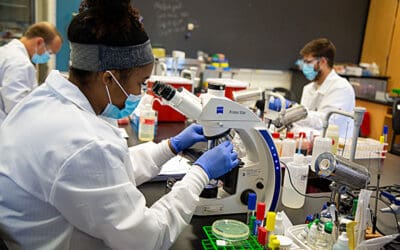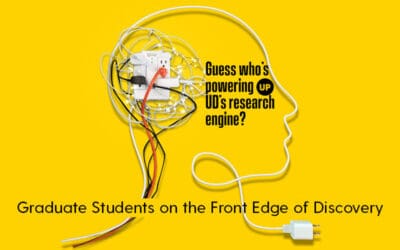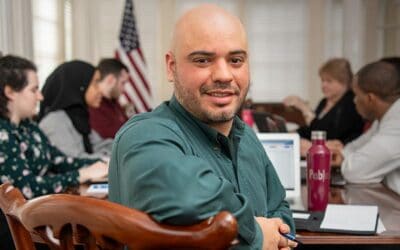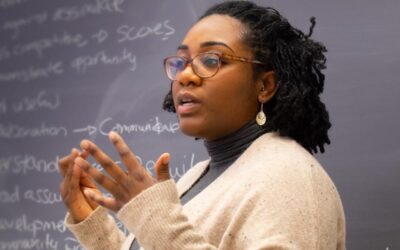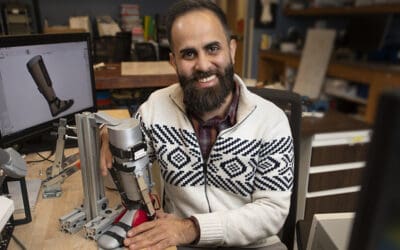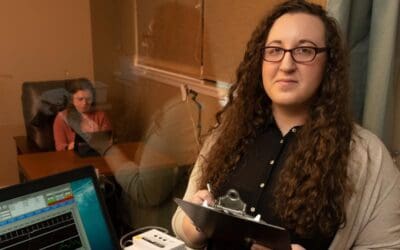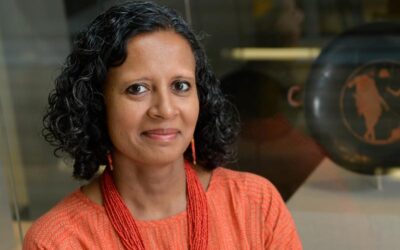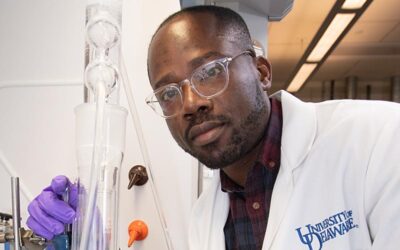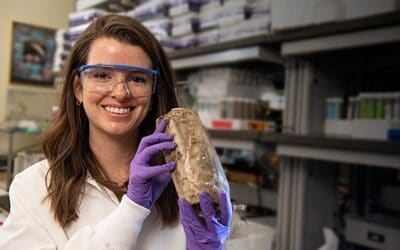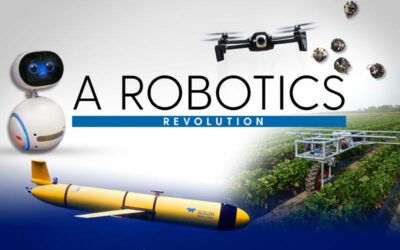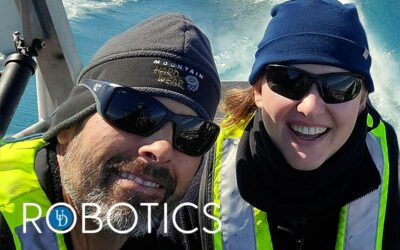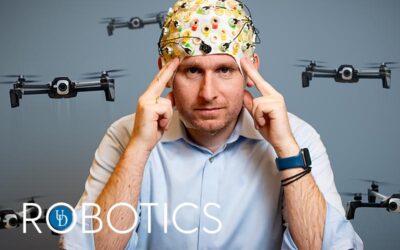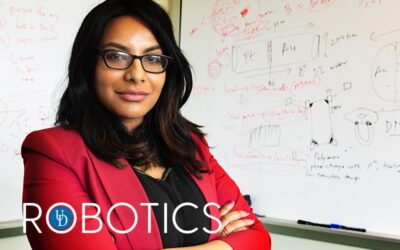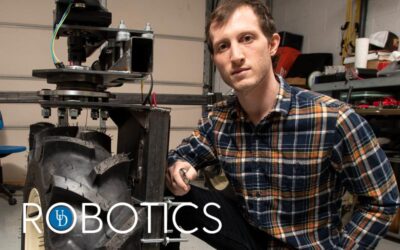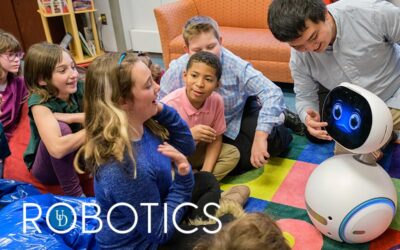UD ROBOTICS
Advancing recovery after a stroke
Every 40 seconds, someone in the United States has a stroke, and it often leads to long-term disability. UD Professor Jennifer Semrau is delving deeper into a sense called proprioception that is critical to our movement, but is often damaged after a stroke. She is using an interactive robot called the Kinarm to get answers. Less than 20 of these devices are in use worldwide with stroke survivors. Pre-pandemic photo by Kathy Atkinson
Allies in overcoming stroke
by Tracey Bryant
It comes suddenly — it may be weakness in an arm, trouble seeing, slurred speech. Stroke.
“We think it only happens to old people, but it also happens to young people,” Jennifer Semrau said.
She remembers how shocked she was when the 36-year-old stroke patient with 2-year-old twins came into the clinic where she was working as a postdoctoral fellow a few years ago at the University of Calgary. Semrau became fascinated with the science behind motor control — the complex sensing and signaling that regulates our every move — and became driven to find scientific answers to help stroke survivors recover.
Now an assistant professor of kinesiology and applied physiology at UD, Semrau is delving deeper into a sense that’s critical to movement, but you may not have heard much about it: proprioception. When you’re asked to close your eyes and touch your nose (go on, give it a try), proprioception is the so-called “sixth sense” in play — that awareness of where your different body parts are.
“People recovering from a stroke have a lot of difficulty with it,” Semrau said.
With a recent $748,231 grant from the National Science Foundation, she’s working to help stroke survivors with upper limb issues regain that sense to improve their movement. The project will conduct human subject experiments, develop novel computational models, and use machine learning methods to enhance the design of personalized, subject-adaptive robotic interventions that are optimized for each individual’s specific profile of impairment.
“A patient may have weakness, an inability to use an arm,” Semrau said. She recalled a story a colleague told her about a man in his late 60s who was a farrier — he made his living shoeing horses, and then he had a stroke. As he was recovering, he felt as though he could move normally, but he would have to look at his hands to actually know where they were in relation to each other, making his work that much more difficult.
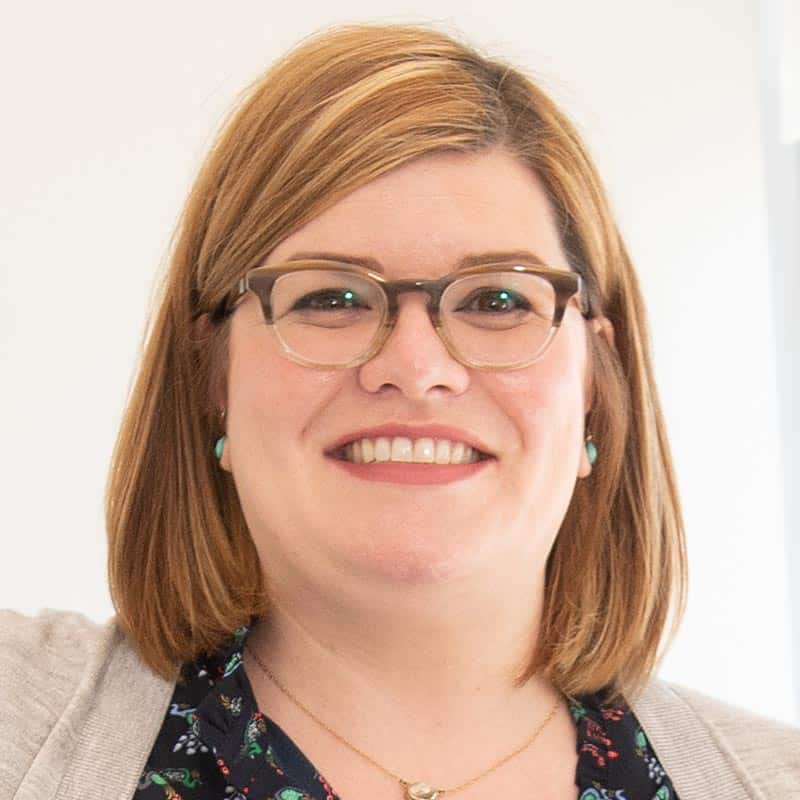
ABOUT JENNIFER
Jennifer Semrau, assistant professor of kinesiology and applied physiology, is the principal investigator of UD’s Sensorimotor Control and Robotic Rehabilitation Lab. She is exploring proprioception — the sense you have of your body position — and how to help patients recover it. This sixth sense is impaired in 50–60% of people after a stroke. She has a Ph.D. in neuroscience from Washington University in Saint Louis and a bachelor’s degree in brain and cognitive sciences from the University of Rochester. She completed a postdoctoral fellowship at the University of Calgary.
“We want to help these stroke survivors gain that control back — both the control of the limb and the actual sensation of the limb,” Semrau said.
In her lab, Semrau is using an interactive robot called the Kinarm (for Kinesiological Instrument for Normal and Altered Reaching Movement) to help with post-stroke assessments. Less than 20 of these devices are in use around the world with individuals with stroke.
The Kinarm resembles a comfy theater seat in which the person sits, with independently movable platforms for each arm, and a small virtual reality ‘movie screen’ for viewing straight ahead.
Semrau and doctoral student Duncan Tulimieri evaluate a stroke survivor doing such tasks as taking the paddler test, where the individual is asked to hit a red ball that’s virtually coming right at him, while his arms and hands are hidden from view. The arms, able to move independently in their movable platforms, are equipped with sensors for measuring motor function through movement accuracy, speed, timing and eye tracking.
Tulimieri can adjust the robot so that study participants can move their arms in a frictionless environment.
“Often, stroke survivors can’t lift their arms against gravity,” he explained.
Conversely, as the individual regains strength in a physical therapy program personalized to their specific condition, the team can increase the resistance to make an arm work harder.
Overall, the data collected helps the researchers design treatment protocols that are truly tailored to the stroke survivor on the road to recovery. The information also contributes to the lab’s ongoing work to better understand the underlying impairments.
Tulimieri, who is now in the second year of his doctoral research in UD’s Biomechanics and Movement Sciences program, says he’s putting his background in exercise science and robotic task programming to good use. In the new year, thanks to a grant from the University of Delaware Research Foundation (UDRF), Tulimieri will have the unique opportunity to work directly with Kinarm’s software developers and programmers to develop custom programs for the robot.
“I love the clinical aspect of this research, working with stroke survivors, and I like to work with robots,” Tulimieri said. “I’m excited about the work ahead.”
The UDRF grant will advance use of robotic tools to identify behavioral biomarkers of proprioceptive impairment that may impact motor skill recovery after stroke. Semrau plans to use the pilot data collected to develop a proposal to the National Institutes of Health for a full-blown study.
“I always want my research to be purposeful and to help people,” Semrau said. “It comes down to: What can we do to improve someone’s quality of life?”
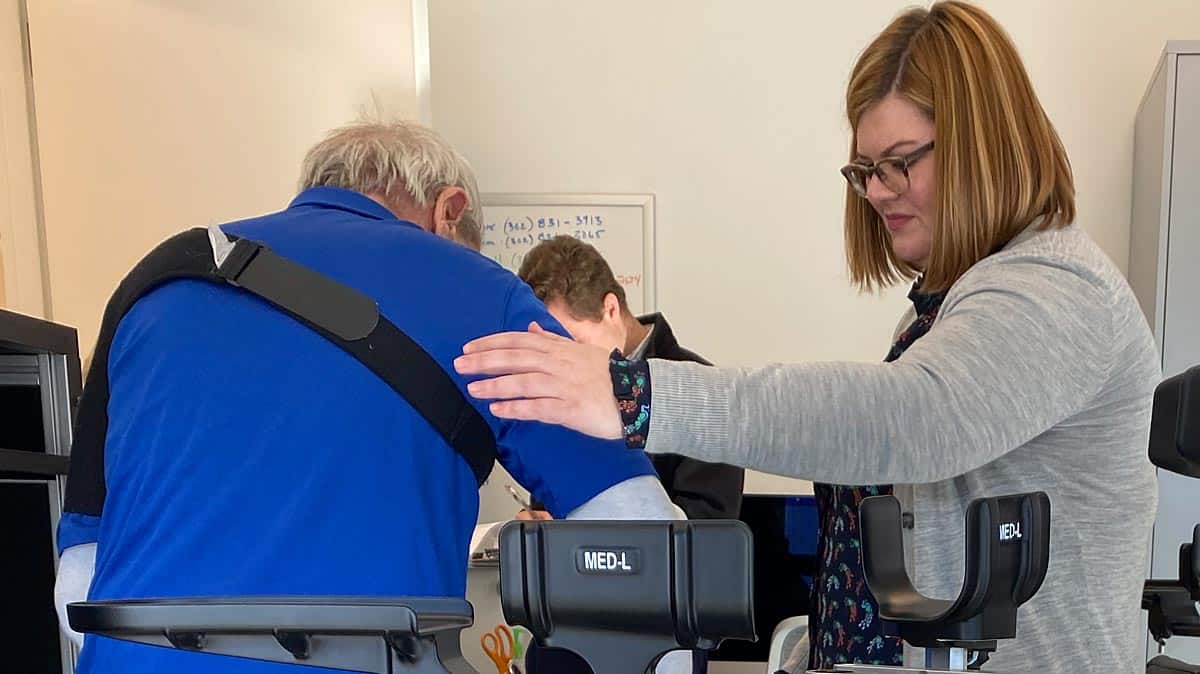
Pre-pandemic photo by Kathy Atkinson
Just the facts
- Every year, more than 795,000 people in the United States have a stroke.
- About 185,000 strokes — nearly 1 of 4 — are in people who have had a previous stroke.
- Stroke risk increases with age, but strokes can — and do — occur at any age.
- Stroke-related costs in the United States came to nearly $46 billion between 2014 and 2015. This total includes the cost of health care services, medicines to treat stroke and missed days of work
— CENTERS FOR DISEASE CONTROL
A UD Robotics Revolution
This special section of our digital magazine highlights an autonomous revolution taking place at UD.
MORE STORIES
From the Vice President for Research, Scholarship and Innovation: Moving Forward
The UD research community continues to navigate COVID-19, with health and safety the highest priority. In spite of hardships, we’re facing the pandemic with vigilance and resilience.
News Briefs
Check out our COVID-19 research, a virtual visit with the editor-in-chief of Science, and undergrads at work on the Frontiers of Discovery.
Honors: Celebrating Excellence
UD faculty and students have won major recognition for their expertise and contributions.
Guess Who’s Powering Up UD’s Research Engine?
This issue of the University of Delaware Research magazine introduces you to a critical creative force at UD — our graduate students and postdoctoral researchers. Their ingenuity is lighting new routes to discovery and solutions.
Front Edge of Discovery: Strengthening democracy for a better world
It all began with a Joseph Conrad novel. Doctoral student Pablo McConnie-Saad discusses his journey to better understand democracy, as the first Whittington Graduate Fellow at the Biden Institute.
Front Edge of Discovery: Developing resilient Black girls
Doctoral student and Graduate Scholar Nefetaria Yates is examining school discipline and the tactics Black girls have developed for dealing with the pressures they face. Her ultimate goal is to elevate voices that have been silenced.
Front Edge of Discovery: Helping children move
Entrepreneur Ahad Behboodi wants to see kids with cerebral palsy move more freely. He plans to commercialize a robotic foot device with the power to help them.
Front Edge of Discovery: A clinical science approach
Lexie Tabachnick, in her fifth year of doctoral studies, helps to mentor other grad students and undergraduates while she studies the powerful impact a UD-developed family intervention program is having on vulnerable kids.
Front Edge of Discovery: Beyond the hands of a potter
Sanchita Balachandran, associate director of Johns Hopkins Archaeological Museum and doctoral student in preservation studies at UD, is uncovering the forgotten makers of ancient Greek ceramics, and in so doing, changing our understanding of the past.
Front Edge of Discovery: Changing the world, one food waste at a time
Elvis Ebikade thinks potato peels hold a lot of promise. He’s working on converting the food waste to valuable chemicals and fuels that can power an environmentally-friendly future.
Front Edge of Discovery: The thing about permafrost is…
As a postdoctoral researcher, Liz Coward collected samples of permafrost from the icy walls of a research tunnel in Alaska to study the carbon stored within it.
A Robotics Revolution
Researchers at the University of Delaware are leveraging robotic systems to gain traction on tough problems. Learn how they are driving forward transformative solutions in agriculture, precision medicine, health care, cybersecurity, marine ecology and more.
UD Robotics: Antarctic food webs
University of Delaware researchers Matthew Oliver and Katherine Hudson think that some biological hotspots in Antarctica may operate less like local farms and more like grocery stores. If they are correct, it could provide new information about how this ecosystem will be affected under climate change.
UD Robotics: Robots these days!
Brain-swarm technology is meant to connect minds and machines. For Associate Professor Panos Artemiadis such robotics research has one purpose: To make life and work better for humans.
UD Robotics: Meet me on the cutting edge
Sambeeta Das is forging into an exciting world you can see only with high-powered microscopes, where sci-fi meets reality. Welcome to the world of microrobots!
UD Robotics: Startup with Roots
Adam Stager is working on chemical-free ways to help strawberry farmers improve yield using an autonomous field robot.
UD Robotics: Social Robots
Children have grown up with interactive technologies like Siri, Google and Alexa, but they don’t always know how to stay safe online. UD researchers are working on ways to help them.
A Jewish Oral History
A class helps preserve the precious stories of a little-documented time in Jewish life.
Test Your Knowledge: Getting Back to Nature
To reduce stress and strengthen our immune systems, experts often point us to the outdoors. So let’s get moving! There’s lots to see and hear, absorb and appreciate in nature.


